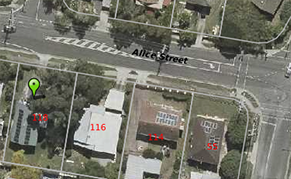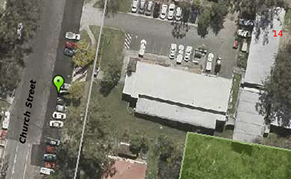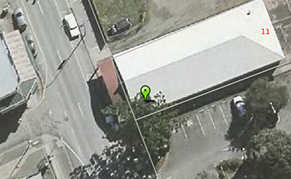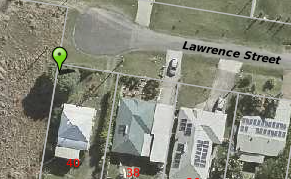Submissions regarding the Vegetation Protection Order for the Bottle Tree at 40 Lawrence Street Marburg closed on 1 July 2025. Council is considering properly made submissions.
Vegetation Protection Orders (VPOs) are made through council’s Local Law No.49 – Protection of Important Vegetation. Council uses the law to protect vegetation of extensive value. The vegetation may be an individual tree, cluster of trees or a large wooded area with undergrowth.
Having protected vegetation on your property does not mean you can’t use or manage it. Advice, support and in some circumstances a management plan, is provided to the property owner.
The Local Law describes the process for making a VPO. It involves:
- identification or nomination
- assessment of suitability for protection
- provision of opportunity for those affected and the broader community to provide submissions
- consideration of submissions by council
- decision by council.
Have your say on recently made VPOs
The law provides for affected residents and the community to have their say through a submission process.
A list of recently made VPOs in the public consultation phase can be found in the following table:
Trees, Cluster of Trees & Area of Vegetation | Affected Properties | Category of Protection | Submission Closure Date |
|---|---|---|---|
| There are currently no VPOs open for submissions | |||
| - | - | - | - |
Any person can make a submission, for or against, the making of a VPO.
Important information about making a submission
Council's reasons for making the order
When a VPO is open for submissions, council will provide further information.
How to make a submission
To be considered a properly made submission, the submission must be in writing and signed by the submitter. The submission must be addressed to “Chief Executive Officer. Attention: Natural Environment & Land Manager”.
Council invites written submissions for or against a vegetation protection order.
As per Local Law No. 49, properly made submissions must:
- be in writing and signed by the person making it
- be addressed to and lodged with Ipswich City Council
- state the name and address of the person making it
- state the grounds of the submission, which must be related to the objects of the Local Law
- state the facts and circumstances relied on in support of those grounds.
How to submit:
- by mail (addressed to Chief Executive Officer, PO Box 191, Ipswich QLD 4305)
- scanned and emailed to council@ipswich.qld.gov.au
- delivered in person to council's administration building at 1 Nicholas Street, Ipswich.
Next steps
After considering all properly made submissions council may confirm the vegetation protection order, with or without modification, or revoke the vegetation protection order, in whole or in part.
If confirmed:
- As soon as practicable, council must give notice of the confirmation to the owner of the land upon which the vegetation is situated
- The vegetation protection order comes into force when this notice is given (or at a later time specified in the order)
- Council will update the Vegetation Protection Register and the webpage
Vegetation nomination process
Vegetation can be nominated by completing an application form (PDF, 123.5 KB) and emailing or sending it to council. In situations where the applicant/nominee is not the owner of the land on which the vegetation is located, it is essential that either the owner has given consent or information is provided detailing why consent is not granted.
Nominations can be made for an individual tree, cluster of trees or a large wooded area with undergrowth.
The nomination must state how the vegetation meets at least one of the following objects of the law including:
Objects: | Examples (but not limited to): |
|---|---|
(a) A valuable part of the natural heritage of the area. |
|
(b) An example of a threatened species or a species that may be about to become, a threatened species. |
|
(c) A valuable scientific resource. |
|
(d) Valuable source of propagating stock or of other horticultural value. |
|
(e) Of historic or cultural significance. |
|
(f) A valuable educational or recreational resource. |
|
(g) An important habitat for native animals (including native or migratory birds) or a part of a fauna and flora corridor. |
|
(h) A key part of a vegetation system or other ecological system. |
|
(i) Important for protecting a water catchment area. |
|
(j) Important for its aesthetic value or its beneficial effect on the amenity of the locality in which it is situated. |
|
(k) Planted for the purpose of meeting obligations under offsets or related environmental management schemes or legislation. |
|
The nomination will be assessed against the objectives of the law to determine if a VPO will be placed over the vegetation. Assessment will be carried out within 15 business days.
If a site visit or further information is needed, a council officer will be in contact.
For urgent nominations where the vegetation is under immediate threat, or for general vegetation protection enquiries, phone council on (07) 3810 6666.
Vegetation Protection Order Register - Local Law 49
Below are details of Vegetation Protection Orders made under Local Law No.49 – Protection of Important Vegetation.
Other relevant council policies include the Urban Greening Policy (PDF, 403.6 KB), Environment Protection Policy (PDF, 304.9 KB), Natural Environment Policy (PDF, 399.4 KB)and Environmental Offsets Policy (PDF, 497.6 KB).
118 Alice Street Goodna - Port Jackson Fig
Date order was made: 11 December 2002
Status: Current
Lot number: 2RP96538
Address: 118 Alice Street, Goodna
Vegetation type(s): Port Jackson Fig (Ficus rubiginosa)
Reasons for order:
1. The tree is considered to be a valuable part of the natural heritage of the area. By its age and size, the tree has become a landmark for the area and has a long association with the local residents.
2. The tree is considered to be important for its aesthetic value. It also provides food, shade and protection for wildlife.
Map: (The tree is at the green marker)

14 Church Street Goodna - Queensland Blue Gum
Date order was made: 2 April 2003
Status: Current
Lot number: 189SL5041
Address: 14 Church Street, Goodna
Vegetation type(s): Queensland Blue Gum (Eucalyptus tereticornis)
Reasons for order:
1. The vegetation forms part of the natural heritage of the area. The tree is one of the largest remaining eucalyptus trees in the area.
2. The historical and cultural association with the area and residents.
3. The ecological significance as habitat support for native birds.
Map: (The tree is at the green marker)

7-9 John Street Rosewood - Hoop Pine
Date order was made: 8 October 2001
Status: Current
Lot number: 9RP906761
Address: 7-9 John Street, Rosewood
Vegetation type(s): Hoop Pine
Reasons for order:
1. The vegetation forms part of the natural heritage of the area. The tree is the largest remaining Hoop Pine in the township.
2. The historical and cultural association with the town and residents.
3. The uncharacteristic contour lines, its prominent position and age.
Map: (The tree is at the green marker)

40 Lawrence Street Marburg - Bottle Tree
Date order was made: 20 May 2025
Status: Interim
Lot number: 173RP35812
Address: 40 Lawrence Street, Marburg
Vegetation type(s): Bottle Tree (Brachychiton rupestris)
Reasons for order:
1. The tree is a good/exceptional specimen and has a good form for the species. The estimated age of the tree is more than 100 years old making it of special interest.
2. Council believes that the tree is in sound condition and is an exceptional type. It also provides visual amenity to the streetscape.
3. The tree also offers biodiversity benefits providing seeds and shelter and Brachychiton rupestris had a number of traditional uses by Aboriginal people, such as food resource (seeds and roots) and tools (fibre for twine/rope).
Map: (The tree is at the green marker)

Ipswich City Council respectfully acknowledges the Traditional Owners, the Jagera, Yuggera and Ugarapul people of the Yugara/Yagara Language Group, as custodians of the land and waters we share. We pay our respects to their Elders past, present and emerging, as the keepers of the traditions, customs, cultures and stories of proud peoples.